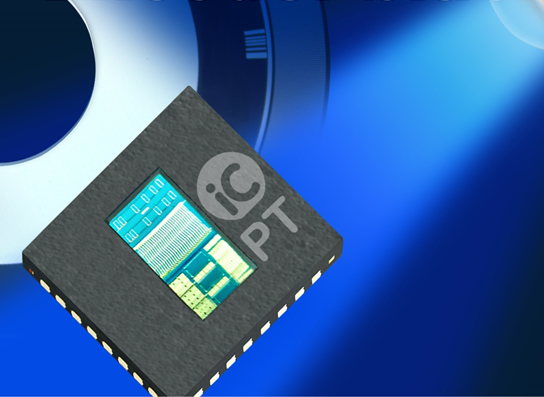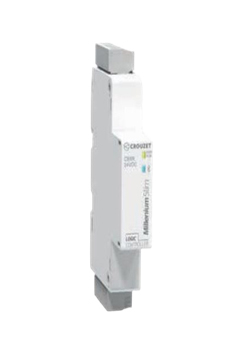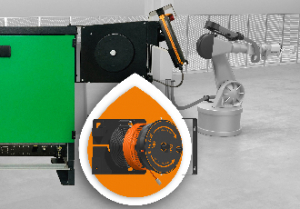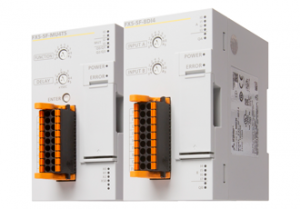Encoder characteristics enhanced by using blue light

Resolution, signal amplitude, harmonic distortion, and jitter performance of incremental and absolute encoders can be improved by the use of blue light, with its shorter wavelength and penetration. Blue light causes less diffraction at the same slot width compared to higher wavelengths, thus resulting in sharper imaging.
Modern semiconductor processes provide small, shallow structures which can take advantage of blue light to improve efficiency, allowing an interlaced photodiode layout which produces sine and cosine encoder signals with lower offset. In addition, a high fillfactor for the photosensitive areas is achieved by an equivalent geometrical transformation.
Blue LEDs are the basis for white emitters, which are subject to extreme demand from the automotive and illumination markets. Today's long term temperature-stable blue LEDs outshine the IR and red LEDs used in encoders so far, because they offer higher light yield and efficiency at low cost. Optical position sensors benefit as a result of the technological progress of both LED and CMOS technology.
iC‑Haus has optimised the incremental scanners in its high resolution iC‑PT H‑series especially for blue light. The integration platform for such single chip encoders is denoted by the trademark Encoder blue.
The encoder chips of the iC-PT H-Series combine optimised scanning and signal interpolation in the smallest available space: a flat 5x5mm optoQFN package with a plane window. Due to the Phased-Array structure of the opto-chips, a scanning area of only 1.9x3.1mm is sufficient to generate 10,000 pulses per revolution using a code disc of only 26mm diameter, for example. The blue light increases the contrast with lower noise and the improved efficiency reduces the current consumption within the optical system.
The devices generate low-jitter encoder quadrature signals with index via 4mA push-pull drivers in single, double and four-fold resolution for precise motor regulation. Besides, conventional Hall sensors used for motor commutation have been replaced by the integration of three additional scanning tracks. Here, the code disc determines the required commutation signal and can be easily adapted to suit the required motor pole count.
The index gating and interpolation are selectable by pin. Output frequencies of up to 1.6MHz are permitted, enabling motor speed control at up to 10,000rpm with 10,000 pulses per revolution. Analogue test signals can be activated for ease of alignment and test of the complete encoder assembly.
The small scanning area and high sensitivity both help to reduce the power requirements of the encoder LED, with an operating current of a few milliamps being sufficient. This improves the LED’s lifetime, especially at high operating temperatures. The iC-PT H devices control the LED and compensate for aging and temperature effects.
iC-Haus provides evaluation boards for the scanners together with plastic code discs and snap-on blue LEDs to allow judging the signal quality benefits in a direct comparison with IR illumination. The higher forward voltage of blue LEDs and the integrity of the materials used within the encoder must be considered at system design.
Encoder blue is tested and qualified by known encoder manufacturers and is expected to replace the current IR LEDs and scanners in existing series products.
Downloads
Similar articles
More from iC-Haus
- Absolute encoders take centre stage at SPS 2019 22nd November 2019
- Flexible interpolation IC debuts at SPS in Nuremberg 17th October 2019
- Module is programmable with BiSS and SSI protocols 20th March 2019
- Magnetic sensor device suits fast BLDC motor control 21st October 2015












Write a comment
No comments